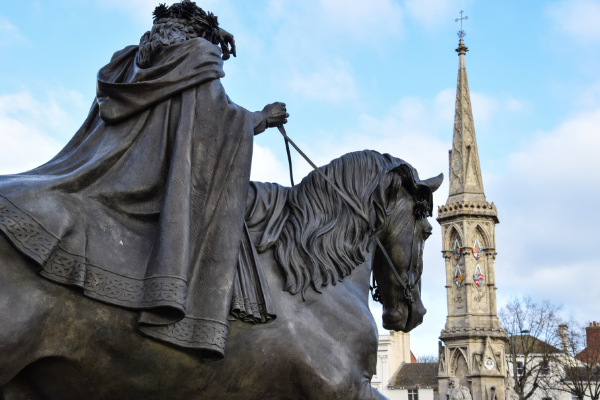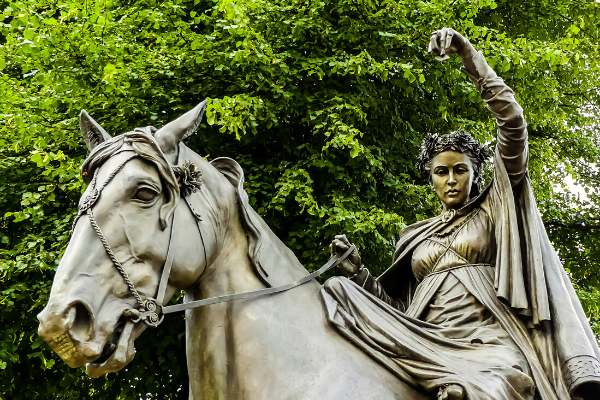The Banbury Horse
Community

You probably know the nursery rhyme ‘Ride a cock horse to Banbury Cross’, and if you’re from Banbury you may know what this refers to, if you’re not, you may be wondering what a cock horse is and where Banbury Cross is.
The phrase ‘cock horse’ originated sometime around the 15th century. The exact meaning of it is open to discussion, with no definitive answer. The four most popular interpretations are:
• A high-spirited horse
• An additional horse used to help with pulling carts uphill
• A pretend horse (hobby horse)
• An adult’s knee (so the rhyme was probably something to be sung while a parent played with their child)
So, now that part is (sort of) cleared up, let’s move onto the rest of the nursery rhyme, which, in case you don’t know, goes:
Ride a cock-horse to Banbury Cross,
To see a fine lady upon a white horse;
Rings on her fingers and bells on her toes,
And she shall have music wherever she goes.
There are lesser-known alternative versions and a few additional verses around, but we’ll stick with this for now. Given that it was first published in 1784, but has actually been sung for hundreds of years, this is unsurprising, however, all versions have the same opening line.
The next question anyone from outside of Banbury may ask is ‘What is Banbury Cross?. Well, it’s located in the town of Banbury, just a short walk from the central high street area, and the cross you can visit today was built in 1859 (previous crosses ended up destroyed over the years). Today’s cross was built in commemoration of Victoria, Princess Royal and stands at 16 metres tall.
So, who is the ‘fine lady’? The truth is, nobody quite knows who the lady is.
She is also alternatively referred to as an ‘old lady’ rather than ‘fine lady’ in some versions.
Over the years it has been linked to Queen Elizabeth 1, Lady Godiva and Celia Fiennes. Celia was an author who wrote about her travels around Britain, more notably for a connection to her for this rhyme, she was sister of William Fiennes, who lived at Broughton Castle in Banbury. It has been suggested that ‘fine lady’ originated as ‘Fiennes lady’. There is no evidence to support this though.
The rings and bells also have different interpretations (are you seeing a theme yet?). Some say they are connected to the lady being someone who came into Banbury to trade pottery, wearing bells to announce her arrival. Some who believe the Lady Godiva suggestion say rings and bells would be notable as the only thing she wore.
To summarise, there are lots of unknowns and interpretations to this historical rhyme, but this is one of the things which makes it so wonderful – you can use your imagination and have YOUR own version. Hopefully children for hundreds of years ahead, all over the country, grow up knowing this historic rhyme, which puts Banbury on the map.

